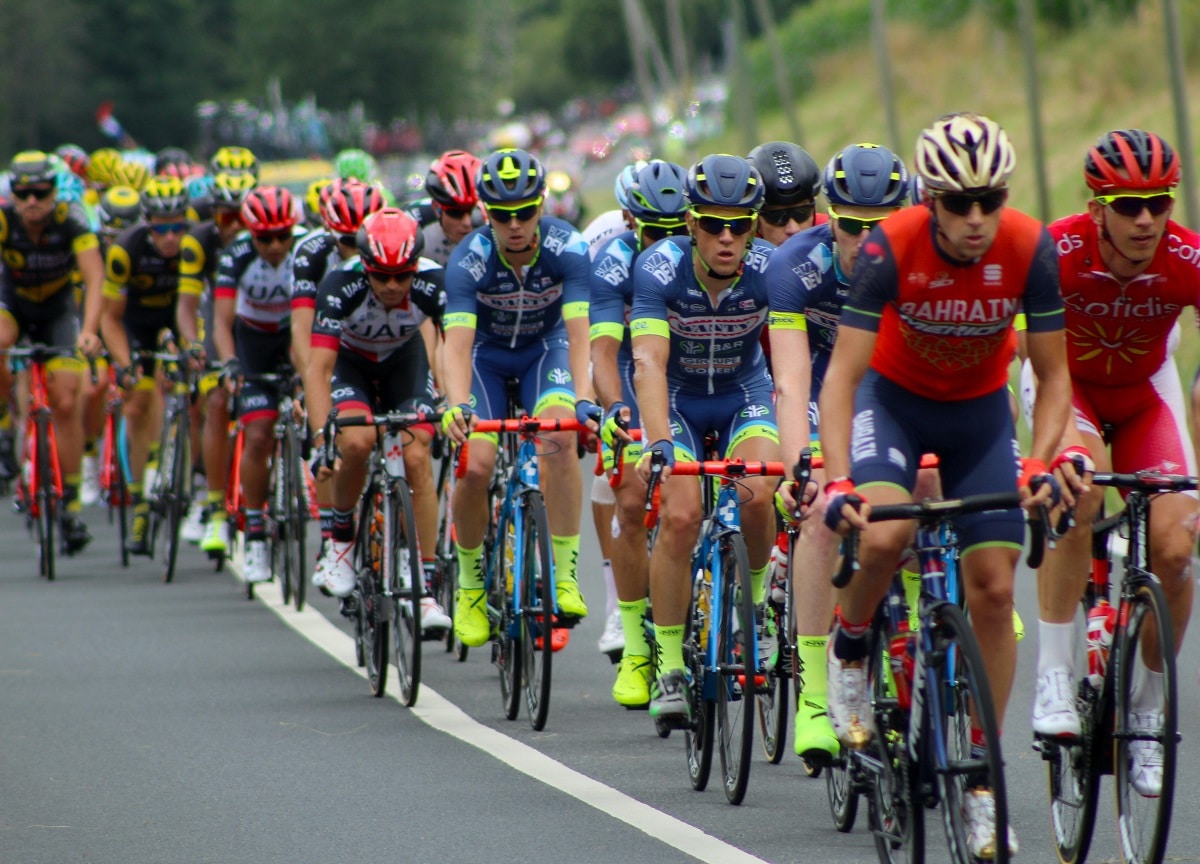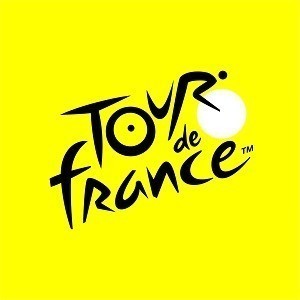Tour de France Facts and Statistics for 2025
Last Updated on: May 29th, 2025
Here are a few of the most interesting Tour de France facts and statistics I was able to dig up in my internet travels. As always, be sure to check back in the future as I will be updating this post as new and updated stats become available.
The Tour de France is an annual multiple stage bicycle race that covers more than 2,200 miles and takes place in France. It is considered one of the most prestigious and difficult cycling races in the world, and attracts top cyclists from around the globe. The race is organized by the Amaury Sport Organisation and has been held annually since 1903, with the exception of during the two World Wars.
The Tour de France consists of several stages, including flat stages, mountain stages, and time trials. The race covers a variety of terrains and often includes challenging climbs in the Alps and Pyrenees mountain ranges. The riders compete for the overall lead, or “yellow jersey,” which is awarded to the rider with the lowest total time over the course of the race. In addition to the yellow jersey, there are also several other jerseys awarded for performance in specific categories, such as best sprinter or best climber.
The Tour de France is not only a showcase of athletic ability, but also a celebration of French culture and history, as it passes through some of the country’s most iconic regions and landmarks. The race is watched by millions of fans around the world and is considered one of the largest sporting events in the world.
Tour de France Facts and Statistics
Tour de France website:
Tour de France Apps:
Tour de France 2023 dates:
July 1 – July 23, 2023
Prized Victory:
The winner of the Tour de France receives a substantial reward. A total of around 2.3 million euros is awarded to teams and riders, with the winner of the final individual general classification taking home 500,000 euros.
Ever-Changing Routes:
The Tour de France’s route changes each year, taking cyclists on a breathtaking journey across different regions. For example, the 2019 Tour traversed France and Belgium, showcasing the diverse landscapes and cultural richness of these countries.
Inception Year:
The Tour de France had its inaugural race in 1903, marking the birth of one of the most iconic sporting events in the world. Since then, it has become an annual tradition that captivates cycling enthusiasts worldwide.
Organizing Powerhouse:
The Tour de France is organized by the Amaury Sport Organization (ASO). This renowned organization, founded in 1992, is responsible for managing and overseeing the race, ensuring its smooth operation and global appeal.
Distance and Stages:
The Tour de France covers a grueling distance. It typically consists of 21 stages, with each stage varying in length and difficulty. Cyclists navigate through flat terrain, mountains, time trials, and sprints, showcasing their versatility and endurance.
Legendary Climbs:
The Tour de France is famous for its legendary climbs, challenging cyclists to conquer steep ascents and demanding descents. Iconic mountain passes like Alpe d’Huez and Mont Ventoux have become synonymous with the race, testing riders’ mettle and captivating spectators.
Yellow Jersey:
The iconic yellow jersey, also known as the maillot jaune, is awarded to the overall race leader. Wearing this prestigious jersey signifies the cyclist’s position at the top of the general classification, symbolizing their excellence and determination.
Sprinters and Green Jersey:
The Tour de France showcases not only the climbers but also the sprinters. The green jersey, or the maillot vert, is awarded to the points classification leader, emphasizing the skill and speed of these sprinting specialists.
Team Effort:
While individual riders compete for personal glory, the Tour de France is also a team sport. Teams work together strategically to support their leaders, protect them in the peloton, and maximize their chances of success.
Global Spectacle:
The Tour de France’s popularity extends far beyond its host countries. Millions of fans around the world tune in to witness the drama, excitement, and extraordinary feats of athleticism showcased during the race, making it a global sporting spectacle.
The Tour de France continues to captivate audiences with its awe-inspiring routes, fierce competition, and rich history. These 10 fun facts have provided a glimpse into the rewarding victory, dynamic routes, and the organization behind this legendary race. As cycling enthusiasts anticipate each year’s edition, let us embrace the spirit of the Tour de France, celebrating the endurance, teamwork, and determination that make this event a thrilling and unforgettable experience for athletes and fans alike.

Photo by Rob Wingate on Unsplash
Past Tour de France winners:
| Year | Winner |
| 1903 | Maurice Garin |
| 1904 | Henri Cornet |
| 1905 | Louis Trousselier |
| 1906 | René Pottier |
| 1907 | Lucien Petit-Breton |
| 1908 | Lucien Petit-Breton |
| 1909 | François Faber |
| 1910 | Octave Lapize |
| 1911 | Gustave Garrigou |
| 1912 | Odile Defraye |
| 1913 | Philippe Thys |
| 1914 | Philippe Thys |
| 1915-1918 | Nobody (World War 1) |
| 1919 | Firmin Lambot |
| 1920 | Philippe Thys |
| 1921 | Léon Scieur |
| 1922 | Firmin Lambot |
| 1923 | Henri Pélissier |
| 1924 | Ottavio Bottecchia |
| 1925 | Ottavio Bottecchia |
| 1926 | Lucien Buysse |
| 1927 | Nicolas Frantz |
| 1928 | Nicolas Frantz |
| 1929 | Maurice De Waele |
| 1930 | André Leducq |
| 1931 | Antonin Magne |
| 1932 | André Leducq |
| 1933 | Georges Speicher |
| 1934 | Antonin Magne |
| 1935 | Romain Maes |
| 1936 | Sylvère Maes |
| 1937 | Roger Lapébie |
| 1938 | Gino Bartali |
| 1939 | Sylvère Maes |
| 1940-1946 | Nobody (World War 2) |
| 1947 | Jean Robic |
| 1948 | Gino Bartali |
| 1949 | Fausto Coppi |
| 1950 | Ferdinand Kübler |
| 1951 | Hugo Koblet |
| 1952 | Fausto Coppi |
| 1953 | Louison Bobet |
| 1954 | Louison Bobet |
| 1955 | Louison Bobet |
| 1956 | Roger Walkowiak |
| 1957 | Jacques Anquetil |
| 1958 | Charly Gaul |
| 1959 | Federico Bahamontes |
| 1960 | Gastone Nencini |
| 1961 | Jacques Anquetil |
| 1962 | Jacques Anquetil |
| 1963 | Jacques Anquetil |
| 1964 | Jacques Anquetil |
| 1965 | Felice Gimondi |
| 1966 | Lucien Aimar |
| 1967 | Roger Pingeon |
| 1968 | Jan Janssen |
| 1969 | Eddy Merckx |
| 1970 | Eddy Merckx |
| 1971 | Eddy Merckx |
| 1972 | Eddy Merckx |
| 1973 | Luis Ocaña |
| 1974 | Eddy Merckx |
| 1975 | Bernard Thévenet |
| 1976 | Lucien Van Impe |
| 1977 | Bernard Thévenet |
| 1978 | Bernard Hinault |
| 1979 | Bernard Hinaultdagger |
| 1980 | Joop Zoetemelk |
| 1981 | Bernard Hinault |
| 1982 | Bernard Hinault |
| 1983 | Laurent Fignon |
| 1984 | Laurent Fignon |
| 1985 | Bernard Hinault |
| 1986 | Greg LeMond |
| 1987 | Stephen Roche |
| 1988 | Pedro Delgado |
| 1989 | Greg LeMond |
| 1990 | Greg LeMond |
| 1991 | Miguel Indurain |
| 1992 | Miguel Indurain |
| 1993 | Miguel Indurain |
| 1994 | Miguel Indurain |
| 1995 | Miguel Indurain |
| 1996 | Bjarne Riis |
| 1997 | Jan Ullrich |
| 1998 | Marco Pantani |
| 1999-2005 | Nobody (Lance Armstrong was stripped of his wins) |
| 2006 | Óscar Pereiro |
| 2007 | Alberto Contador |
| 2008 | Carlos Sastre |
| 2009 | Alberto Contador |
| 2010 | Andy Schleck |
| 2011 | Cadel Evans |
| 2012 | Bradley Wiggins |
| 2013 | Chris Froome |
| 2014 | Vincenzo Nibali |
| 2015 | Chris Froome |
| 2016 | Chris Froome |
| 2017 | Chris Froome |
| 2018 | Geraint Thomas |
| 2019 | Egan Bernal |
| 2020 | Tadej Pogačar |
| 2021 | Tadej Pogačar |
| 2022 | Jonas Vingegaard |
Please note that some of these numbers are easier to find than others. Most of these fun facts come from internet reports and may not be official tallies. No information contained on DMR should be relied upon to make investment decisions. Basically, this is the best I can find and I don’t guarantee anything to be 100%.
Related Categories:
Related Tags:
